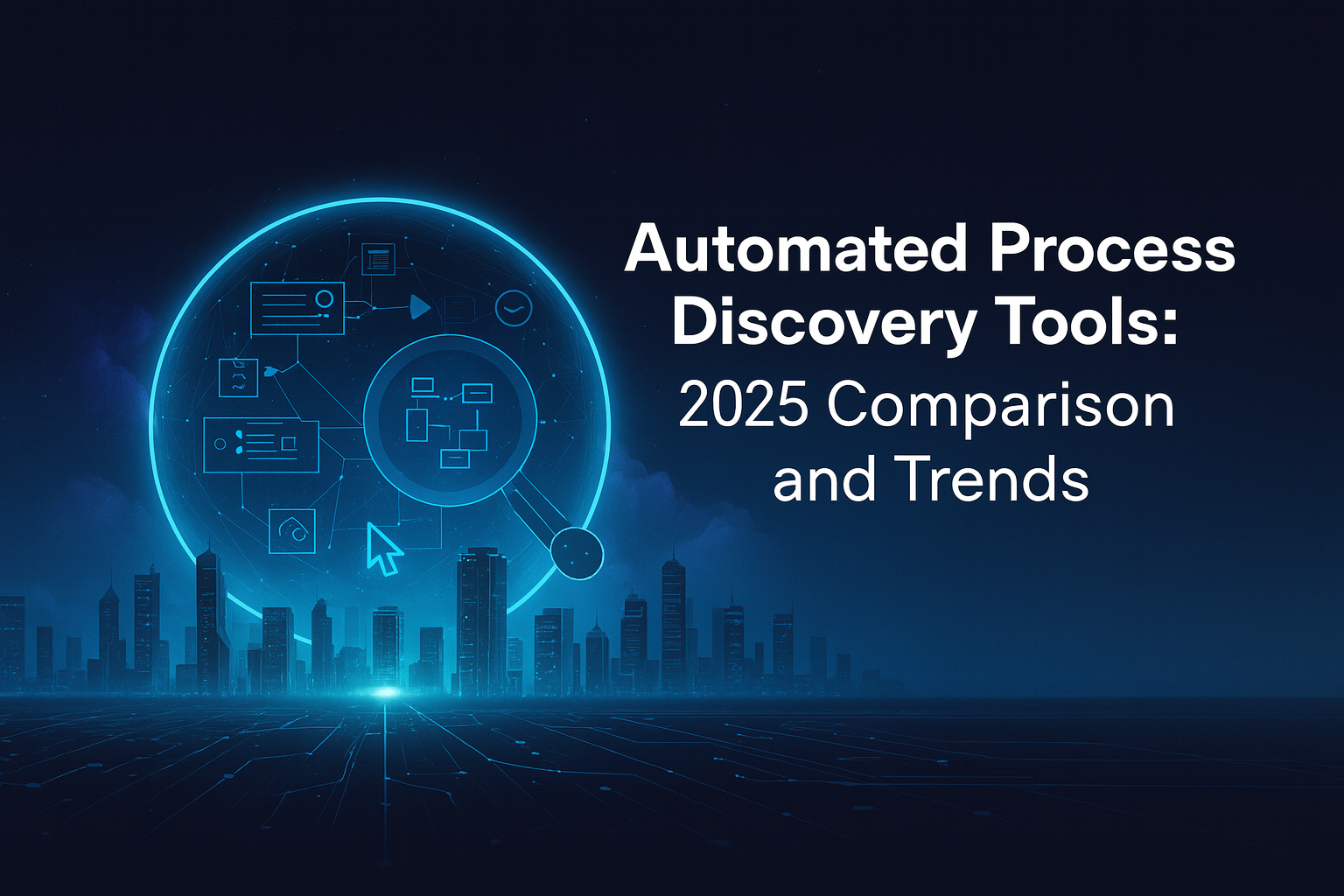
Most digital transformation projects don’t fail because of technology — they fail because organizations never gain a complete, accurate picture of how work actually happens.
Manual discovery sessions, interviews, and sticky-note workshops can take months and still miss critical exceptions, edge cases, and inefficiencies. By the time documentation is complete, it’s often already outdated.
In 2025, that’s no longer acceptable. The rise of automated process discovery and process intelligence platforms gives organizations the ability to automatically map, analyze, and optimize their operations with real data — combining user activity, system logs, and contextual insight to reveal the true current state of work.
This article compares the leading tools shaping this new landscape — ClearWork, Celonis, UiPath, and Skan — and explores the trends driving process intelligence forward.
Automated process discovery uses system and user-level data mixed with documentation and user narrative to automatically generate process maps, requirements, and improvement opportunities.
Unlike traditional process mapping — which depends on interviews and static diagrams — automated discovery combines digital evidence (user actions, event logs, app telemetry) with human input (recorded voice, text, or shared documents) to create a complete, evidence-based understanding of how processes actually run.
It answers questions such as:
This hybrid approach — blending data-driven process mining, human task capture, and narrative context — produces a living operational model that informs everything from requirement generation to automation design.
The 2025 market for process discovery and intelligence platforms is rapidly maturing. While legacy tools focus heavily on system logs, newer entrants integrate human activity capture, AI analysis, and end-to-end orchestration to support faster, more holistic transformation.
Below, we compare the leading tools: ClearWork, Celonis, UiPath, and Skan, plus other notable options.
Overview:
ClearWork is a people-centric process transformation platform that unifies Automated Discovery and Process Intelligence in one solution. It automates the entire discovery phase, capturing real user activity, identifying knowledge gaps, and generating requirements and workflows ready for project delivery.
Unlike traditional process mapping tools that stop at visualization, ClearWork’s integrated Process Intelligence module continuously monitors work patterns to surface bottlenecks, rework loops, and drift — enabling ongoing improvement and governance.
How It Works:
Key Benefits:
Best Fit:
Enterprises and public-sector organizations seeking a unified discovery-to-delivery platform that blends human narrative, user activity, and system data — reducing project risk and accelerating transformation.
Overview:
Celonis is the long-standing leader in process mining and a pioneer in process intelligence. It excels at reconstructing workflows from system event logs — particularly within ERP and CRM environments.
Strengths:
Trade-offs:
Best Fit:
Large enterprises with complex ERP systems, mature IT infrastructure, and dedicated analytics teams.
Overview:
UiPath combines robotic process automation (RPA), task mining, and process mining within one ecosystem. Its process discovery tools are designed to help organizations identify automation candidates and deploy bots quickly.
Strengths:
Trade-offs:
Best Fit:
Enterprises heavily invested in UiPath’s automation suite that want discovery tightly linked to RPA pipelines.
Overview:
Skan emphasizes real-time task capture from human work rather than relying on system logs. Using lightweight desktop agents, it provides visibility into how employees interact with applications and perform tasks.
Strengths:
Trade-offs:
Best Fit:
Organizations prioritizing operational visibility into human workflows and task automation opportunities.
When evaluating solutions, focus on how quickly and completely they reveal your real operational state — and whether they help you act on it.
Key Criteria:
If your goal is more than analytics — if you want actionable, people-centric intelligence that drives transformation velocity — consider platforms that unify discovery, intelligence, and execution, like ClearWork.
The process discovery and intelligence market is entering a new phase.
Legacy tools like Celonis and UiPath offer deep enterprise capabilities.
Skan delivers fast human-level visibility.
But the most significant shift is toward holistic platforms that merge automated discovery, process intelligence, and AI orchestration — giving organizations continuous clarity, not just one-time insight.
ClearWork represents this new generation: a privacy-first, people-centered platform that automates discovery, generates build-ready blueprints, and grounds AI-driven transformation in the reality of how work actually happens.
Compare the leading platforms — and see why ClearWork’s approach stands out.

Preparing for a successful project is no longer about hundreds of hours and tens of thousands of dollars being spent to map out your current state. Let's figure out how you can utilize modern solutions to automate and augment this function saving you countless hours and tens or hundreds of thousands of dollars.
Enjoy our newsletter!